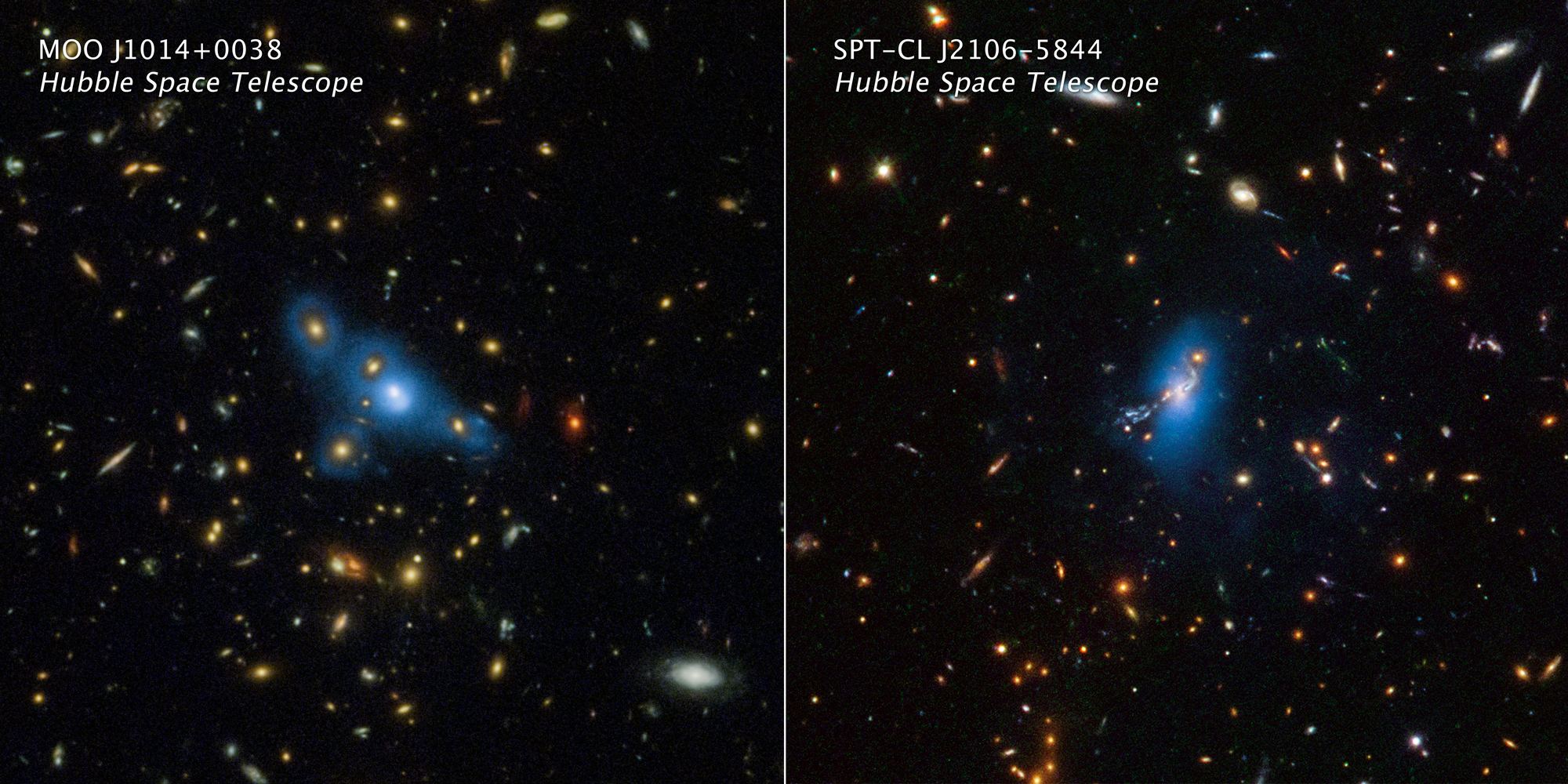In the giant galaxy clusters in the Universe, which can consist of hundreds or thousands of galaxies, there are countless “rogue” stars wandering between them. These stars are not gravitationally bound to any individual galaxy but to the halo of galaxy clusters themselves and are only discernible by the diffuse light they emit – “Ghost Light” or “Intracluster light” (ICL). For astronomers, the explanation for how these stars became so scattered throughout their galaxy clusters has always been an unresolved question.
There are several theories, including the possibility that the stars were pulled from their galaxies, ejected in the course of galactic mergers, or were part of their cluster since its early formation billions of years ago. Using NASA’s Hubble Space Telescope, a team from Yonsei University, Seoul, and the University of California, Davis, conducted an infrared survey of distant galaxy clusters. Their observations suggest that these wandering stars have been adrift for billions of years and were not stripped from their respective galaxies.
The survey was conducted by Hyungjin Joo, a Ph.D. candidate with the Yonsei Observable UNiverse Group (YOUNG) at Yonsei University, and Myungkook James Jee, the leader of the YOUNG group and an LSST Fellow at UC Davis. As they indicate in their paper, which recently appeared in the journal Nature, leading theories on ICL predict that its light fraction (compared to the total light of a galaxy cluster) rapidly decreases with increasing redshift, reaching just a few percent for clusters with redshift values of z >1 (ca. 10 billion light-years away)

The first instance where ICL was detected was in 1951 by Swiss astronomer Fritz Zwicky, who reported observing luminous material while observing the Coma Cluster. This cluster contains at least 1,000 galaxies and is one of the nearest to Earth, just 330 million light-years distant. However, observational studies of ICL involving galaxy clusters up to 10 billion light-years away have remained inconclusive because the ICL is so dim. In fact, the ICL from these galaxy clusters is roughly 10,000 times dimmer than the night sky when observed from Earth.
For the sake of their study, Jee and Joo examined deep infrared imaging data acquired by Hubble of 10 galaxy clusters with redshift values of 1 ? z ? 2 (ca. 7.731 to 10.324 billion years away). Their results revealed that the ICL light fraction remains constant for billions of years. As Jee explained in a recent NASA press release:
“This means that these stars were already homeless in the early stages of the cluster’s formation. We don’t exactly know what made them homeless. Current theories cannot explain our results, but somehow they were produced in large quantities in the early Universe. In their early formative years, galaxies might have been pretty small and they bled stars pretty easily because of a weaker gravitational grasp.”
The theory that intercluster stars could be stripped from the galaxies where they were born is certainly not without merit. As galaxies move through the intercluster space while orbiting the center of a cluster, they pass through gaseous materials. This creates drag, which pushes gas and dust out of the galaxy and into the intercluster space, providing the raw material for new star formation. However, based on their survey, Joo and Jee have ruled out this mechanism as the primary cause for intracluster star production, as it would mean that the ICL fraction would increase over time as the population grew.

A light fraction that is consistent over billions of years indicates that something must have allowed for the birth of many stars billions of years ago. In any case, this will have immense implications for the study of galaxy formation and evolution, especially where questions regarding Dark Matter are concerned. “If we figure out the origin of intracluster stars, it will help us understand the assembly history of an entire galaxy cluster, and they can serve as visible tracers of dark matter enveloping the cluster,” said Joo.
If intercluster star populations were the result of stars being kicked out of their galaxies during mergers, the stars would not have enough time to scatter throughout the entire gravitational field of the cluster. As a result, they would not trace the distribution of the cluster’s Dark Matter. But if the stars formed during the early history of the cluster (i.e., billions of years ago), they would have fully dispersed throughout the cluster, allowing astronomers to use them to map out the cluster’s DM distribution.
This new technique is complementary to the traditional method of DM mapping, known as gravitational lensing. In this technique, astronomers observe how the gravitational force of an entire cluster will alter the curvature of spacetime around it, causing light from background objects to become warped and amplified. These studies will also benefit from the near-infrared capability and sensitivity of NASA’s James Webb Space Telescope (JWST), which will greatly extend the search for intracluster stars in very-high redshift galaxy clusters.
In turn, these surveys will provide new opportunities for measuring DM distribution and what role (if any) it played in forming the first galaxies in the Universe. From this, scientists may finally resolve one of the greatest mysteries of modern astronomy and cosmology.

